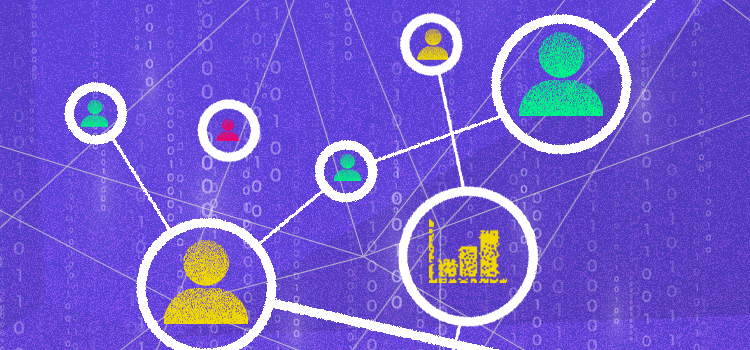January 03, 2022
Connecting the Dots: Social Network Analysis in Criminal Investigation

Steve Adams
Product Marketing Manager
Investigators frequently need to establish if two or more individuals or businesses connected to an investigation are associated with one another in any way. Identifying an association may mean identifying if two people know one another or may involve identifying an array of links between a large group of people within an organized crime group. Investigators seek to determine existing relationships between individuals for a myriad of reasons, including mitigating fraudulent insurance claims, identifying members of organized crime groups, and identifying members of terrorist cells.
Link analysis is a data analysis technique used by investigators and intelligence analysts to evaluate relationships between entities, including people, businesses, and objects. Social network analysis uses network theory to determine links between individuals suspected of criminality, identifying any association between offenders, kinship, and sexual relationships.
The internet provides investigators with a range of different sources of information that support social network analysis. Consented data, like residency information and phone numbers, can be used to establish if two individuals have lived in the same house or lived as neighbors. Business directories and company websites can demonstrate ownership or previous coworkers. Social media sites can also prove pre-existing relationships.
Social media provides the greatest opportunities within internet investigation to establish a detailed understating of how people are associated. People naturally connect their social media accounts with the accounts belonging to their friends and family. From an investigative point of view, this makes social media ripe for opportunities to identify relationships that exist in the real world. Through the friends and followers of a social media account, you can identify a large majority of their social network.
It is estimated that there are currently 3.8 billion people using social media, roughly 84% of all internet users. Therefore, social media provides a goldmine of data for investigators to exploit when investigating crimes and establishing links between individuals.
Social network analysis involves understanding a subject's real-world relationships, primarily through open-source intelligence. Through social media sites, investigators can determine who an individual knows in the real world. Identifying association links between individuals enables investigators to identify avenues for further inquiries and evidence relationships that the subjects are hiding or dispute.
To identify an individual's social network, investigators look to the social media giants, like Facebook and Twitter. Social media sites establish the social networks of their users in different ways, some through friends and some through followers. Looking at this data on each site can help investigators identify individuals with strong relationships to a subject.
When conducting Social Network Analysis, investigators can utilize data analysis techniques to clarify the results of their research. Through social media, analyzing the friends and connections of multiple individuals can identify repeat names to demonstrate an association between parties. However, social media sites provide unstructured information. By exporting and analyzing data, investigators can conduct meaningful analysis to identify individuals that repeatedly appear in a criminal network. Analysis of data in Excel can demonstrate links that would require hours of manual searching on social networking sites.
Social network analysis can go beyond spreadsheets to developing network charts using visualization software. Network charts enable an investigator or analyst to map the relationship network that connects a subject and their connections. A network chart is a qualitative approach to analysis that enables investigators to visualize relationships between individuals within data using diagrams. Through a network chart, key individuals can be identified who have the closest associations with the subject of the investigation. A network chart consists of individuals (‘nodes’) who are connected through their relationships or social connections, such as marriage or friendship (‘links’). Investigators identify close associations through internet intelligence using several methods, including frequent tags, shared family names, and listed family members. Network charts are an objective, replicable representation of the community described within the information used to create the chart. Network charts are useful when demonstrating complicated relationships and are incredibly valuable in court when prosecuting offenders. A jury member is far more likely to recognize that two individuals know each other if they can visualize all of the supporting evidence and how it links them.
Network charts also support Guilt-by-associations analysis. Mapping a network of known offenders who act within an organized network can help identify further individuals involved. Identifying individuals who share mutual connections with a criminal network helps identify other possible involved parties. The friend lists of 6 different people on social media may result in hundreds or even thousands of people. If one person is friends with all members of a criminal network they are far more likely to be implicated in criminality. Analysts can use network charts to interpret the social network of numerous individuals and identify the key individuals of note, which may increase the effectiveness of activity conducted to tackle criminality.
Establishing a subject’s social network and identifying links between individuals can enable investigators to investigate crime and defend insurance claims. Social Network Analysis can assist investigators in investigating organized crime groups, fraud rings, and suspicious accidents, helping to identify involved parties.
Investigating Organized Crime Groups
Social network analysis can provide information about gangs; identifying gang members, victims/ exploited youths, reach, activity, and impact. Mapping a gang enables investigators to identify specific key individuals for targeting, distinguishing ‘core’ gang members from peripheral members.
Investigating Fraud Rings
Social network analysis enables investigators to map networks of fraudsters working together to defraud insurance companies. Mapping a network and linking it to large numbers of claims enables insurance companies to process substantial numbers of claims at once.
Investigating Accidents
Social network analysis facilitates investigation into suspicious accidents, enabling relationships between claimants to be identified and visualized. ‘Hire and Crash’ and ‘Crash for Cash’ scams are prevalent in the car insurance industry, concerning pre-planned incidents involving two individuals involved in planning the fraud. Injured parties and witnesses could be planted at the scene of a staged accident to support a claim, so identifying any relationships between parties is vital. Researching the involved parties on social media, investigators can identify those incidents where both parties are involved in the scam. If an investigator can find an online link between two individuals in an accident who claim not to know one another, then they can begin to investigate a potential scam.
Skopenow is an analytical search engine that uses social media, open web, deep web, and dark web data to generate actionable intelligence. Law Enforcement and Insurance Fraud teams utilize Skopenow to identify association links between individuals and businesses. Utilizing computer vision and behavioral analytics, Skopenow identifies hidden connections through addresses, vehicles, social media, court records, and image recognition. Sign up for a 7-day free trial of Skopenow at: https://www.skopenow.com/try.


